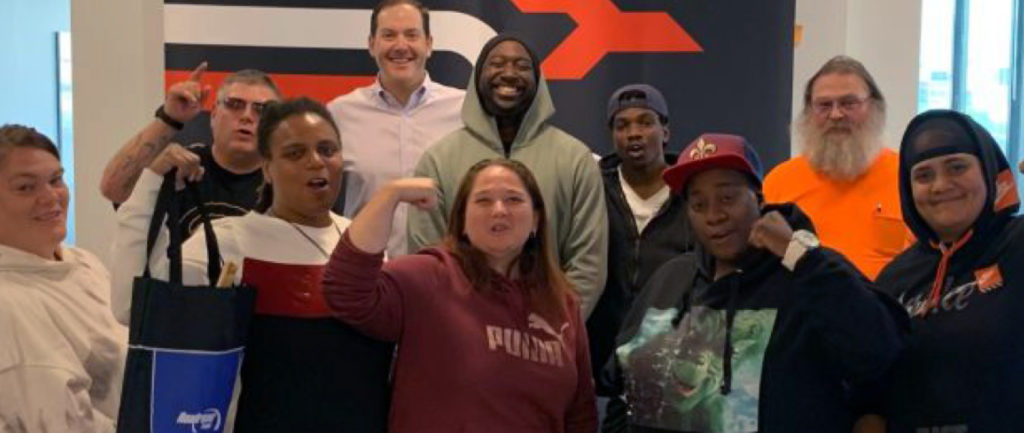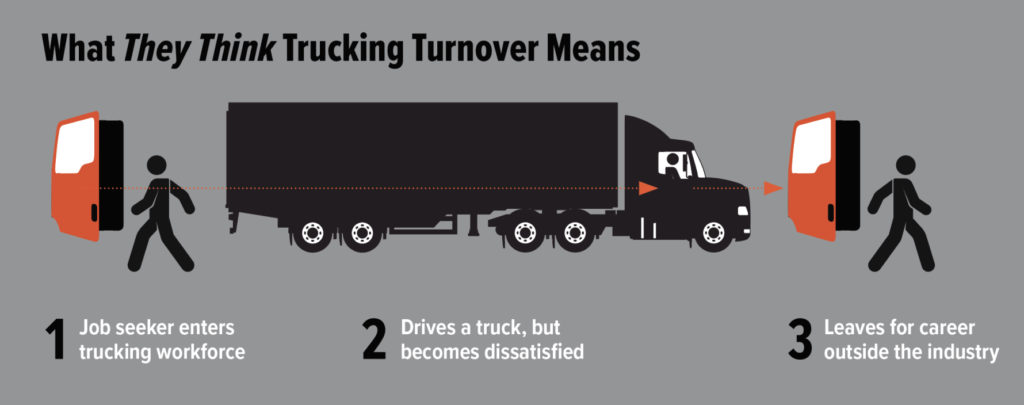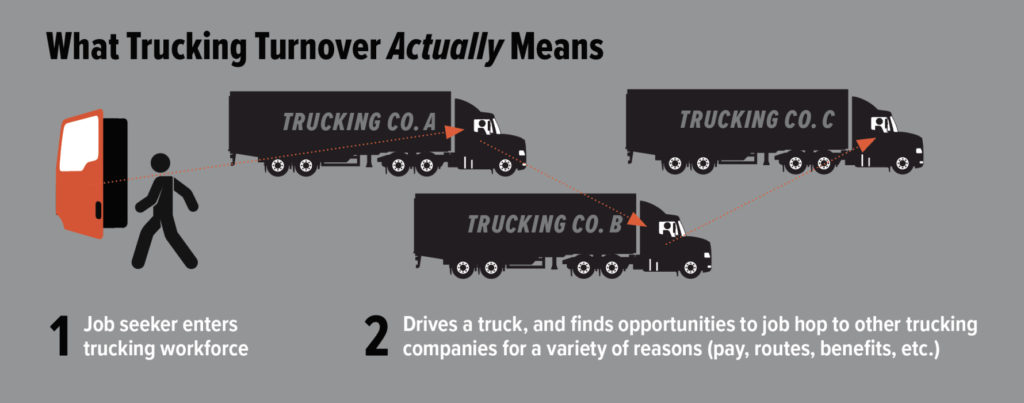Driver-First Mindset Fuels Mutual Respect and Successful Relationships for the Smart Long Haul
This article explores the importance of building an operational model that not only performs optimally for a carrier’s freight delivery customers, but also demonstrates an unwavering commitment to the engagement, development and sustained success of its own drivers.
Long before the global pandemic took a heavy toll on our supply chains, there was already a truck driver shortage. While the pandemic exacerbated that shortfall, it has also served to establish a renewed appreciation for truckers and the critical role they play in keeping our country going. Truck drivers not only deliver the essentials; they are, in fact, highly essential workers themselves.

If we begin each day with the mindset that a trucking company should be a champion of its drivers, then decision-making from that vantage point becomes pretty straight forward.
Can a new technology that we have the potential to invest in, help drivers better perform for our customers while also achieving their own personal career goals? Is the new policy we’re about to roll out transparent and fair to those that drive with us? Will a facility or infrastructure upgrade help streamline a process that facilitates faster loading, delivery or overall efficiency that, in turn, can help our drivers earn more money? Making sure the approach to decision-making at all levels of the organization follows this ethos is critical and requires management and those in the C-Suite to essentially put themselves “in the seats” of their drivers to understand how they will be impacted by such decisions. To make this happen reflexively and with regularity, a company’s culture has to embrace it.
The simple truth is that driving a truck for a living is a hard profession. I know this because at one point in my career, I drove a truck. While I now sit in the President’s seat at Roadrunner, that experience is one that shaped me, and I am committed to making a career in driving a rewarding one for those who choose to pursue that profession as part of our company. Much like outside salespeople and business consultants who are in their cars or on planes traveling to client locations for meetings much of every week, drivers in the logistics industry are in their trucks doing much the same. As with those other professions, it is our view that for a trucking business to provide industry leading service to its customers, its operational structure must be designed to empower these “road runners” to do great work and be well compensated for it. Never has this been more important than since the arrival of COVID-19, given the multitude of challenges it has brought to our and our customers’ industries, and the shifting priorities and work preferences of those who choose driving as a career.
According to the American Trucking Associations (ATA), trucker turnover is widely misunderstood and misstated. ATA studies the industry, surveys drivers regularly, and recently found that turnover today is mostly a result of drivers moving from one carrier to another, which is actually “churn” rather than attrition. They note that in such a highly competitive hiring environment, the prevalence of signing bonuses and other perks are fueling that churn. What makes drivers want to switch carriers? Or more importantly, what makes them want to stay put and work hard for themselves and the company they drive with?
While many in the industry favor a business model that hires drivers as employees, our company is a champion of the entrepreneurial spirit and strives to identify, onboard, and thoroughly support drivers who want to be in charge of their own destiny as independent contractors. Recruiting and retaining the best drivers can be considered both an art and a science. Over the years it has become clear to our organization that while investing strategically in recruitment is essential, it is just the beginning. There are many things–not just money–that motivate candidates to choose and stay with a company.
Whether drivers have been in the industry for many years and own their own equipment, or are newcomers looking to acquire equipment to drive, in our experience it all starts with respect and transparency. As business owners and partners, we support and encourage our drivers’ entrepreneurship, and look for ways to help them run successful businesses of their own as part of our business. Toward that end, we recently started inviting all new drivers to visit our headquarters for a comprehensive orientation when they sign on with us. This gives newcomers an immediate opportunity to interact directly with our leadership team, including me. We also arrange and cover the cost for them to stay in an upscale hotel with a full-service restaurant during their visit, where they are greeted by a staff that celebrates their arrival. This helps them gain an immediate understanding of our core values, culture and appreciation of their decision to drive with us. Importantly, simple steps like these also go a long way toward helping carriers get to know and better support their drivers’ individual needs and aspirations.


The key is opening the lines of communication from day one. As part of these weekly orientations, every Thursday morning, we pause our operational duties at Roadrunner headquarters to welcome new drivers in person in a fun and engaging way that signifies to them that they are not just a number, but a celebrated and critical part of our business. These sessions are broadcasted live via Zoom to our other locations, serving as a weekly reminder to everyone in the company that our drivers are at the very center of our culture.
My personal goal at every orientation is to get to know each driver, beyond the scope of just driving a truck. As a result, I know which of our drivers are veterans, what their CB handles are, how many kids they have, and how they like to spend their spare time. I hand every attendee my business card, which has my personal cell phone number listed. This surprises a lot of drivers, because many come from freight companies where there was a distinct line between management and truckers. Many, in fact, say they never had the opportunity to interact with top-level management over the course of their time with those previous companies. And for many, that spanned numerous years. Yet, I get calls from drivers on a regular basis to discuss ideas they have for making the company better, to address issues they’ve encountered on a job, and sometimes just to talk about life on the road. I’m always happy to take those calls and I learn something from each and every one of them. As one of our drivers recently said to me, “In terms of an open-door policy, you guys really have that here, on all levels.”
In many ways, we work for our drivers just as much as they work for us, and the level of success that they are able to achieve determines our own. It follows, then, that soliciting and taking steps to address driver feedback is essential to this continued, mutual success. What we’re hearing right now in terms of what our driver’s want from us is: “Communicate and be transparent with me, trust me and keep me moving.” And what they like most about driving is: “The freedom of being my own boss and getting to see the country as I work.” Needless to say, as a management team, we are all-in on meeting these expectations to help fuel our drivers’ and our company’s further success.
As part of a driver-first mindset, we also believe that innovating and deploying industry best practices across all aspects of the organization is critical. As in every industry right now, there is a lot of emphasis on delivering technologies that enhance efficiency, promote data collection and sharing. A number of very robust technological tools are available to trucking companies and drivers, and we believe the focus should be on both developing and finding the most impactful ones for those who drive with us.
For example, handheld devices and apps put drivers in control by placing a wealth of information at their fingertips. Because reducing downtime is one the most effective ways to positively impact the earnings that drivers can take home at the end of each week, the right devices and apps can help put drivers more in control. With such tools, drivers now or in the future will be able to engineer their runs for efficiency, manage their settlements, review their safety record, optimize where they stop for fuel, and be assured they’re filling up at a highly competitive price negotiated by their carrier. Empowering drivers to pre-plan their trips with intelligently engineered runs not only reduces delays but ensures that they can stop at quality facilities along the way for food and bio breaks, get home faster to be with family, or simply enjoy the night off rather than on the road. These and other tools designed to help drivers be good stewards of their own businesses can also be continuously improved and augmented based on the collection of data as well as via feedback from the drivers that use them.
The Road to a Driver-First Mindset
- Culture begins at the top
- Go all-in as a champion of your drivers
- Drivers are individuals — get to really know them
- Put drivers in control via key resources and technology
- Mentoring will pay dividends in growth & success
- Profitable drivers build profitable carriers
- A zero-tolerance culture requires true accountability
- True driver/management communications is a 24/7 endeavor
Above all else, ours is a business predicated on the contributions of people. As such, it is highly dependent upon the quality of the culture we create and foster as operators in an industry that helps to facilitate commerce all across this great country. In recent years, we have seen more women drivers interested in running their own truck or small fleet. We value the skill sets and perspectives that women are bringing to the profession and actively pursue these drivers as part of our company’s recruitment efforts. The number of driving teams now working with us, and others across the industry, is continuing to expand as well.
These include pairings of spouses, siblings, and parents with their adult-aged children who have come to realize that being on the road together can be both a high profitable and personally rewarding experience. As these and other new and ever-younger drivers join the industry, it becomes increasingly incumbent upon us as operators to pair them with driver mentors. Doing so can help accelerate the careers of these enthusiastic newcomers by enabling them to learn firsthand from seasoned industry veterans who can share a wealth of safety, vehicle maintenance, general logistics and other valuable road knowledge.
We can say from experience that for drivers who embrace being business owners, the opportunity to operate efficiently, expand their business and generate more income is highly achievable when they drive with a company that also embraces that entrepreneurial spirit and puts them first each and every day. Doing so builds a mutually beneficial and respectful relationship that’s built for the long haul.